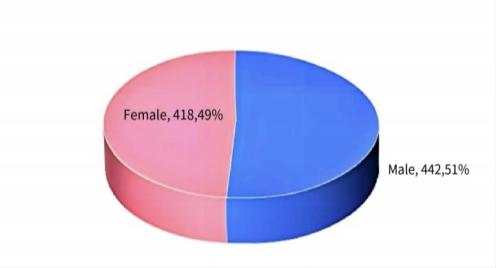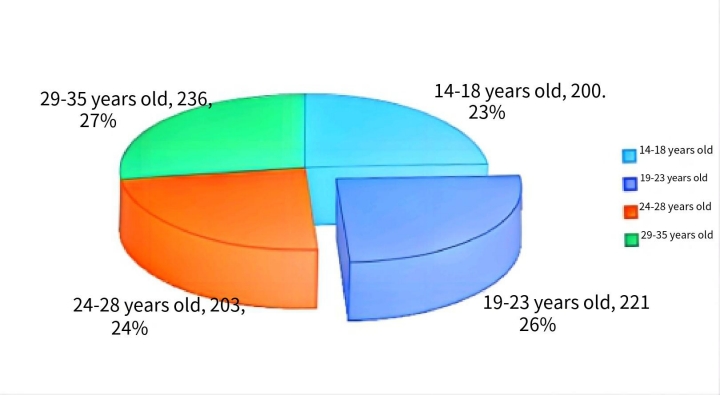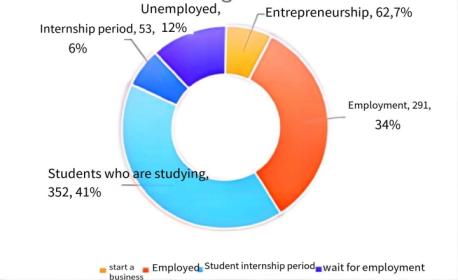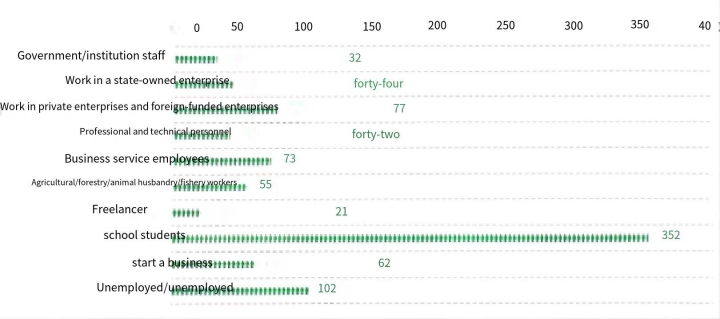1. Introduction
We conducted a comprehensive, targeted, effective survey of various activities related to the construction of a county-level youth-friendly city in Suning County, Hebei Province. The study included assessing the overall satisfaction, sense of fulfillment, and expectations of the youth in Suning County regarding policy implementation and the benchmarking process. We summarized the reasonable aspects of policy implementation and conducted research on practical issues that arose during the process, documenting interviews with the youth in Suning County. Based on these interviews, we distributed questionnaires to the youth in Suning County for data collection, aiming to accurately understand the “pain points” of the youth. This article, based on survey data, formulates model hypotheses for relevant issues and provides corresponding solutions, offering a simple reference for consideration.
To begin, let’s organize the identified problems:
Problem 1: Constructed a structural equation model with latent variables for county-level economic development, policy support, resource allocation, youth-friendly city, youth employment, youth travel, youth housing, youth exchange, and youth cultural entertainment, conducting a path analysis.
Problem 2: On the basis of the initial model, continued to refine and optimize the model, checking for violations of estimation. It was found that there was no negative error variance, and the absolute value range of the standardized estimation coefficients was 0.07-0.90, indicating no violation of estimation. Therefore, an overall model fitness test can be conducted.
Problem 3: Conducted a fitness test of the model results to achieve optimal decision-making.
2. Literature Review
The construction of youth-friendly cities differs from conceptual planning for cities targeting vulnerable groups such as “child-friendly cities” and “elderly-friendly cities.” Scholars have proposed construction principles, including policy friendliness, spatial quality, industrial innovation, and youth subjectivity [1]. In terms of research methods, scholars have evaluated youth-friendly cities based on big data using techniques such as cluster analysis and inverse distance weighting [2]. Some researchers have applied structured theory to discuss the theoretical connotations, functional features, and the construction of indicator systems for youth-friendly cities [3]. The metaphorical analysis of youth-friendly city construction using the metaphors of “container” and “magnet” is also an important theoretical outcome of related research [4]. Additionally, some scholars, based on the youth-friendly city practices, with Toronto as a representative [5], have summarized a wealth of pioneering experiences, aiming to provide valuable insights for China.
3. Data Analysis
3.1. Determination of Sample Size
According to the latest data from the Handan City Statistics Bureau, the permanent population of Suning County is 341,919, with 45,087 youths aged 15 to 34. Utilizing pre-survey data (see Table 2), the overall variance 
 =1.84. Setting the relative error limit not exceeding 5% (i.e., absolute error limit d=0.1448), with a confidence level of 95%, the initial sample size is determined as follows:
=1.84. Setting the relative error limit not exceeding 5% (i.e., absolute error limit d=0.1448), with a confidence level of 95%, the initial sample size is determined as follows:
 335
335
Considering a pre-survey questionnaire response rate 
 =88.33%, a further adjustment yields the initial sample size:
=88.33%, a further adjustment yields the initial sample size:
 380
380
Based on the characteristics of multi-stage sampling and the specifics of this survey project, a design effect deff=2.5 is determined. Consequently, the final required sample size for the survey is 950 responses. (Ultimately, 860 valid questionnaires were collected.)
3.2. Data Analysis
3.2.1. Characteristics of Youth in Suning County. According to the latest data, the permanent population of Suning County is 341,919, with males accounting for 51.24% and females for 48.76%. In the age group of 14 to 35, there are 45,087 youths, constituting 22.06% of the population. This youth proportion is significantly lower than that of youth-oriented cities like Shenzhen and Beilun (Shenzhen’s youth population is approximately 52%; Beilun District in Ningbo has a youth population ratio of about 33%). The proportion of youth in Suning County is low, local employment rates are not high, and there is uneven development among the youth in various towns.
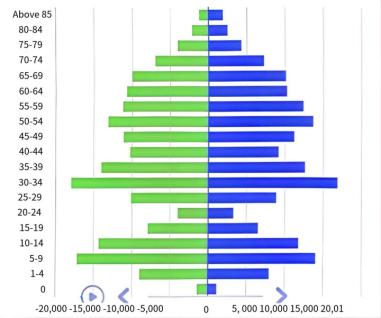
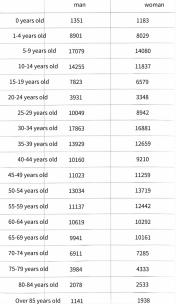
Figure 1. Age Composition of Suning County Population
3.2.2. Gender and Age Distribution of Survey Participants. As shown in Figure 2, the total number of survey participants is 860, with 442 males (51.4%) and 418 females (48.6%). The gender ratio is close to 1:1, indicating the reliability of the survey data. Figure 3 illustrates that among the surveyed individuals, there are 200 participants aged 14-18, 221 aged 19-23, 203 aged 24-28, and 236 aged 29-35, demonstrating a relatively even distribution across age groups.
|
|
Figure 2. Gender Ratio of Survey Participants | Figure 3. Age Distribution of Survey Participants |
3.2.3. Education and Employment Status of Survey Participants. Figure 4 indicates that the majority of survey participants are students, with approximately 34% already employed and 12% unemployed. The proportion of unemployed individuals remains significant, while the number of entrepreneurs is relatively small. Figure 5 reveals that among the employed respondents, a considerable number work in private enterprises, foreign-funded enterprises, and the commercial service industry.
|
|
Figure 4. Current Status of Survey Participants | Figure 5. Occupational Distribution of Survey Participants |
4. Model Construction and Solution
4.1. Initial Model Construction
To explore the impact mechanisms of county-level economic development, policy support, and resource allocation on the construction of a youth-friendly city, this study constructs a structural equation model with latent variables for county-level economic development, policy support, resource allocation, youth-friendly city, youth employment, youth travel, youth housing, youth exchange, and youth cultural entertainment. Path analysis is conducted, and the initial model is illustrated in Figure 6.
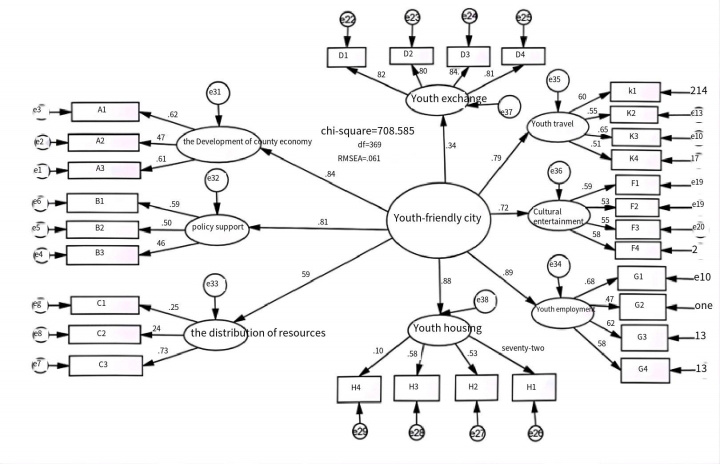
Figure 6. Initial Model
Upon importing the data into the initial model and running it, the model is identifiable. The CMIN/DF ratio is 1.98, indicating a good fit. However, GFI=0.83<0.9, CFI=0.84, AGFI=0.83, RMSEA=0.061>0.05, and p-value=0.000<0.05, suggesting that the model is less than ideal and requires further modification.
4.2. Model Revision and Fitting
Building upon the initial model, further adjustments and optimizations were made, checking for estimation violations. It was found that the model had no negative error variances, and the absolute values of the standardized estimation coefficients ranged from 0.07 to 0.90. The model did not exhibit violations of estimation, allowing for an overall model fit test. The revised model was adjusted based on modification indices (MI values) as shown in Table 1. In consideration of practical significance, relevant constraints were added or removed for latent variables. The changes in fit indices and comparative fit indices were analyzed to determine the appropriateness of the adjustments.
Table 1. Modification Indices
M.I. | Par Change | |||
e5 | <--> | e24 | 21.22 | 0.19 |
e6 | <--> | e23 | 33.00 | 0.18 |
e8 | <--> | e9 | 29.88 | 0.68 |
e8 | <--> | e29 | 27.77 | 0.65 |
e9 | <--> | e29 | 20.44 | 0.54 |
e21 | <--> | e29 | 11.06 | -0.20 |
From a practical perspective, adding these six paths holds practical significance. As observed in previous research, policy support providing opportunities for collaborative learning among the youth may stimulate youth exchange to some extent. Furthermore, a focus on resource allocation favoring youth development can enrich their cultural and entertainment development.
The schematic diagram of the model after modification shows a significant decrease in the chi-square value. By comparing the fit indices and competitive fit indices between the initial and revised models, it is evident that the revised model fits better than the initial one, as detailed in Table 2.
Table 2. Fit Indices of Initial and Revised Models
Initial Model | Revised Model | |
CMIN/DF | 1.91 | 1.53 |
AIC | 831.27 | 619.97 |
NCP | 334.47 | 211.37 |
The values of various fit indices for the revised model are smaller than those of the initial model, indicating a better fit for the revised model. The modified model is presented in Figure 7.
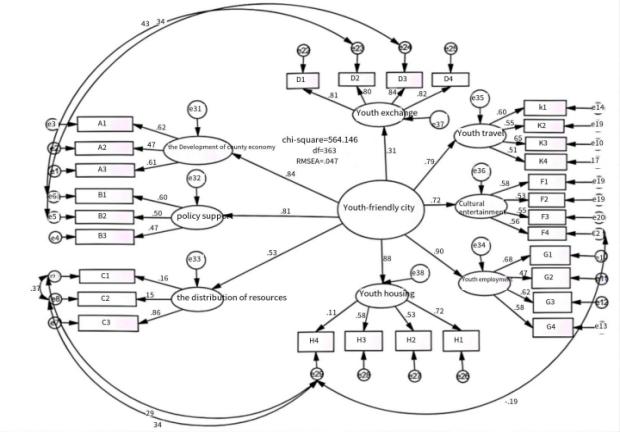
Figure 7. Revised Model
4.3. Analysis of Model Results
(1) Fit Test
The fit indices in the results are as follows: GFI=0.901, AGFI=0.911, CFI=0.926, all exceeding 0.9; RMSEA=0.047<0.05, and the chi-square value has significantly decreased. The chi-square value/degrees of freedom ratio=1.53, within the range of 1 to 3, indicating a relatively ideal fit. Overall, the model’s various indicators meet the optimal fit criteria after adding relevant paths.
(2) Model Conclusions
The standardized path coefficients of the structural equation model reflecting the importance of the explained variables are presented in Table 3:
Table 3. Standardized Path Coefficients of the Revised Structural Equation Model
Estimate | |||
Youth-Friendly City | <--- | County Economic Development | 0.84 |
Youth-Friendly City | <--- | Policy Support | 0.81 |
Youth-Friendly City | <--- | Resource Allocation | 0.54 |
Youth-Friendly City | <--- | Youth Exchange | 0.31 |
Youth-Friendly City | <--- | Youth Travel | 0.79 |
Youth-Friendly City | <--- | Cultural Entertainment | 0.72 |
Youth-Friendly City | <--- | Youth Employment | 0.90 |
Youth-Friendly City | <--- | Youth Housing | 0.88 |
County economic development, policy support, and resource allocation all have significant positive effects on the construction of a youth-friendly city, with path coefficients of 0.84, 0.81, and 0.54, respectively. Therefore, building a youth-friendly city requires vigorous development of county-level economics, industrial innovation, and the creation of urban brands. Policies should be inclined towards young talents, and substantial investments in public resource facilities are needed to meet the multidimensional needs of youth in living, working, and leisure.
The positive impacts of county economic development and policy support are substantial, with path coefficients exceeding 0.8. Therefore, when constructing a youth-friendly city, priority can be given to supporting county economic development and improving policies.
Youth exchange, youth travel, youth housing, youth employment, and youth cultural entertainment all positively contribute to the construction of a youth-friendly city, with path coefficients of 0.31, 0.79, 0.72, 0.90, and 0.88, respectively. Among them, the promoting effects of youth employment and youth housing are particularly significant. Therefore, focusing on these two aspects is essential for actively promoting the construction of a county-level youth-friendly city.
5. Conclusion
1. The realization of a youth-friendly city can be achieved through community or rural transformation, involving developers and emphasizing commercial formats for investment and operation. At the second level, choosing a bustling area in Suning County to construct a benchmark youth community is recommended. This community would introduce services such as employment and entrepreneurship consulting, childcare services, domestic services, and psychological counseling to meet the material and spiritual needs of the youth.
2. Leveraging Suning’s current ecological texture, diverse ecological tracks with different themes (cultural heritage charm, fresh ecology) can be developed. Additionally, the construction of cycling stations and ecological parks, along with the incorporation of suitable youth-friendly signage, is proposed. Finally, enhancing existing park infrastructure, introducing creative projects, and creating distinctive focal areas can enhance the appeal for youth recreation.
3. To retain young people locally, the establishment of various platforms such as industrial aggregation platforms, investment attraction, and returning home for entrepreneurship needs to be expedited. Furthermore, precision in formulating talent policies is crucial to attract young individuals from outside the region.
References
[1]. Liu Danli, Wei Shuiyun & Li Jijun. (2021). Exploring the Path to Build Youth-Friendly Cities at the County Level Surrounding Metropolises: A Case Study of Dachang County in Hebei Province. In Urban Planning Society of China (Eds.), Spatial Governance for High-Quality Development - Proceedings of the 2021 China Urban Planning Annual Conference (Vol. 11, Urban and Rural Governance and Policy Research) (pp. 468-478). China Architecture & Building Press.
[2]. Yang Zihui, Wang Runze, Shi Siwei & Ren Junyu. (2023). Evaluation of Youth-Friendly City Construction Based on Big Data. In People’s City, Planning Empowerment - Proceedings of the 2023 China Urban Planning Annual Conference (Vol. 05, New Technologies in Urban Planning) (pp. 595-606).
[3]. Yan Zhen. (2022). The Theoretical Connotation, Functional Characteristics, and Indicator System Construction of Youth-Friendly Cities. China Youth Study, (05), 5-12. doi:10.19633/j.cnki.11-2579/d.2022.0066.
[4]. Xi Jieying. (2023). City, Can You Attract and Blossom My Youth? - Viewing the Construction of Youth-Friendly Cities through the Metaphors of “Container” and “Magnet”. Youth Studies and Practice, (01), 2-13.
[5]. Liu Danli & Wei Shuiyun. (2023). The Experience and Enlightenment of Youth-Friendly City Construction in Canada. In People’s City, Planning Empowerment - Proceedings of the 2022 China Urban Planning Annual Conference (Vol. 11, Urban and Rural Governance and Policy Research) (pp. 559-568).
Cite this article
Dai,M.;Han,Y.;Wang,Y.;Wang,Y. (2024). Research on the mechanism of youth-friendly city impact based on structural equation model. Theoretical and Natural Science,34,201-206.
Data availability
The datasets used and/or analyzed during the current study will be available from the authors upon reasonable request.
Disclaimer/Publisher's Note
The statements, opinions and data contained in all publications are solely those of the individual author(s) and contributor(s) and not of EWA Publishing and/or the editor(s). EWA Publishing and/or the editor(s) disclaim responsibility for any injury to people or property resulting from any ideas, methods, instructions or products referred to in the content.
About volume
Volume title: Proceedings of the 3rd International Conference on Computing Innovation and Applied Physics
© 2024 by the author(s). Licensee EWA Publishing, Oxford, UK. This article is an open access article distributed under the terms and
conditions of the Creative Commons Attribution (CC BY) license. Authors who
publish this series agree to the following terms:
1. Authors retain copyright and grant the series right of first publication with the work simultaneously licensed under a Creative Commons
Attribution License that allows others to share the work with an acknowledgment of the work's authorship and initial publication in this
series.
2. Authors are able to enter into separate, additional contractual arrangements for the non-exclusive distribution of the series's published
version of the work (e.g., post it to an institutional repository or publish it in a book), with an acknowledgment of its initial
publication in this series.
3. Authors are permitted and encouraged to post their work online (e.g., in institutional repositories or on their website) prior to and
during the submission process, as it can lead to productive exchanges, as well as earlier and greater citation of published work (See
Open access policy for details).
References
[1]. Liu Danli, Wei Shuiyun & Li Jijun. (2021). Exploring the Path to Build Youth-Friendly Cities at the County Level Surrounding Metropolises: A Case Study of Dachang County in Hebei Province. In Urban Planning Society of China (Eds.), Spatial Governance for High-Quality Development - Proceedings of the 2021 China Urban Planning Annual Conference (Vol. 11, Urban and Rural Governance and Policy Research) (pp. 468-478). China Architecture & Building Press.
[2]. Yang Zihui, Wang Runze, Shi Siwei & Ren Junyu. (2023). Evaluation of Youth-Friendly City Construction Based on Big Data. In People’s City, Planning Empowerment - Proceedings of the 2023 China Urban Planning Annual Conference (Vol. 05, New Technologies in Urban Planning) (pp. 595-606).
[3]. Yan Zhen. (2022). The Theoretical Connotation, Functional Characteristics, and Indicator System Construction of Youth-Friendly Cities. China Youth Study, (05), 5-12. doi:10.19633/j.cnki.11-2579/d.2022.0066.
[4]. Xi Jieying. (2023). City, Can You Attract and Blossom My Youth? - Viewing the Construction of Youth-Friendly Cities through the Metaphors of “Container” and “Magnet”. Youth Studies and Practice, (01), 2-13.
[5]. Liu Danli & Wei Shuiyun. (2023). The Experience and Enlightenment of Youth-Friendly City Construction in Canada. In People’s City, Planning Empowerment - Proceedings of the 2022 China Urban Planning Annual Conference (Vol. 11, Urban and Rural Governance and Policy Research) (pp. 559-568).










